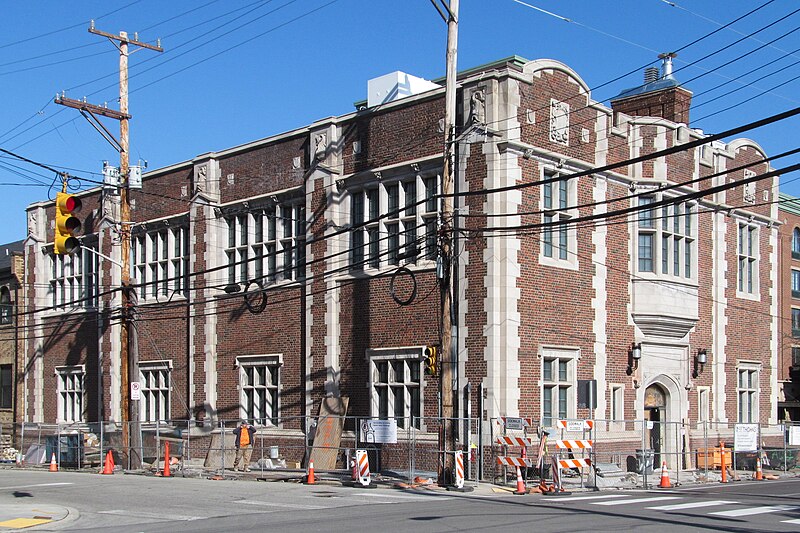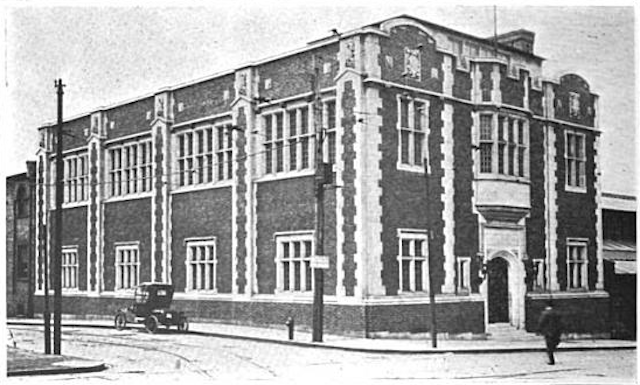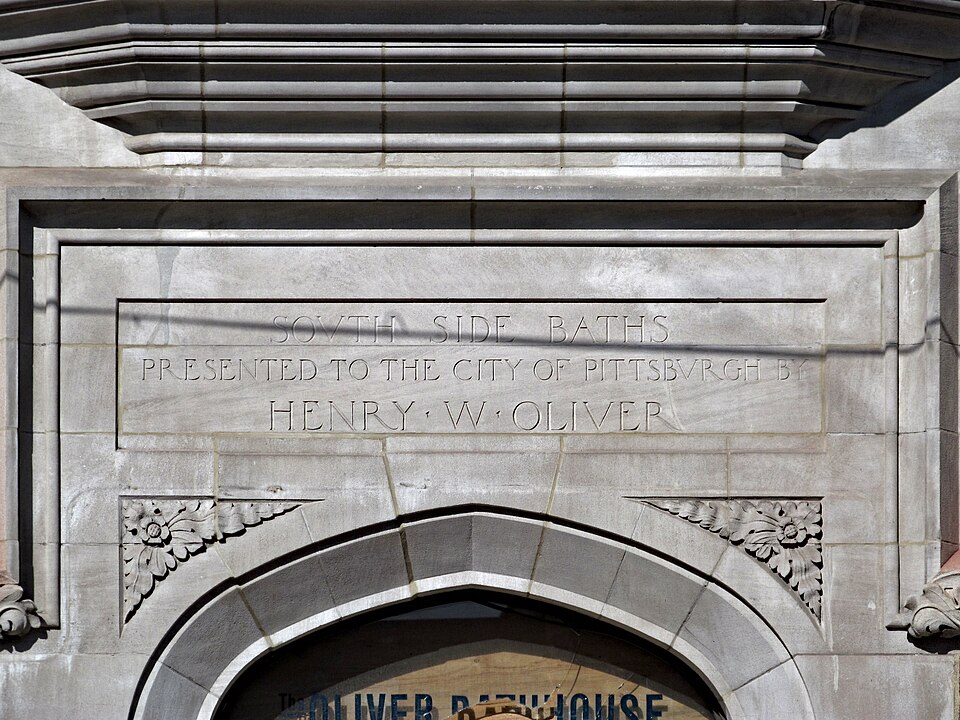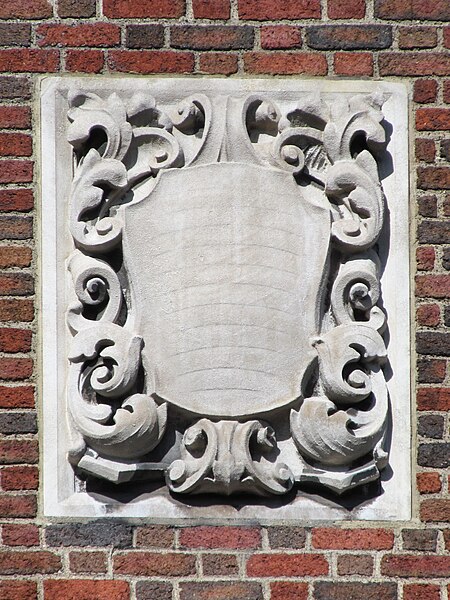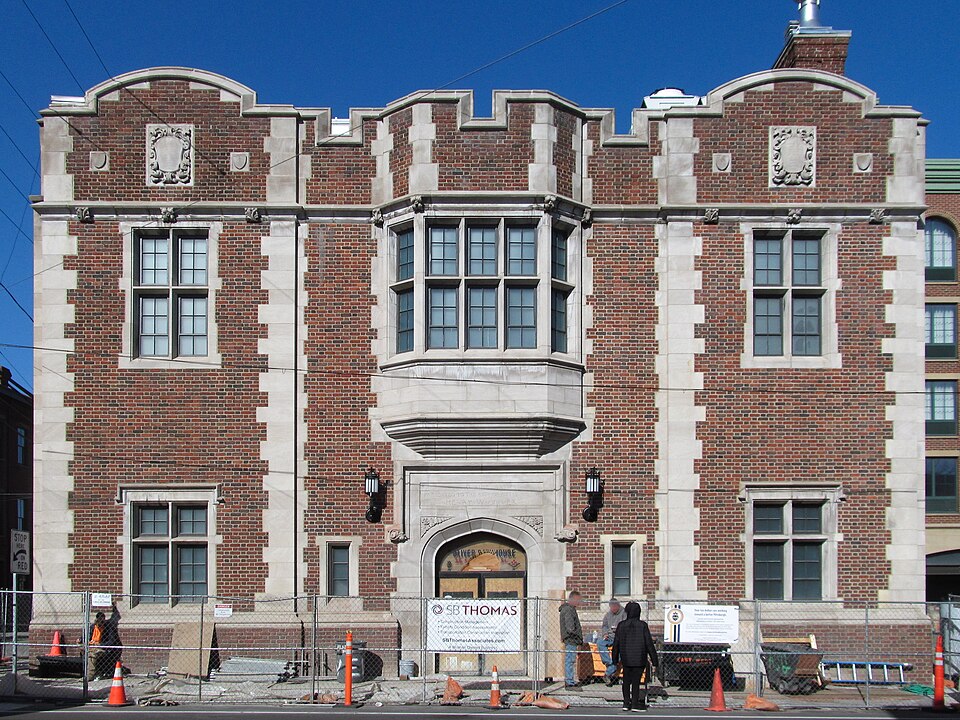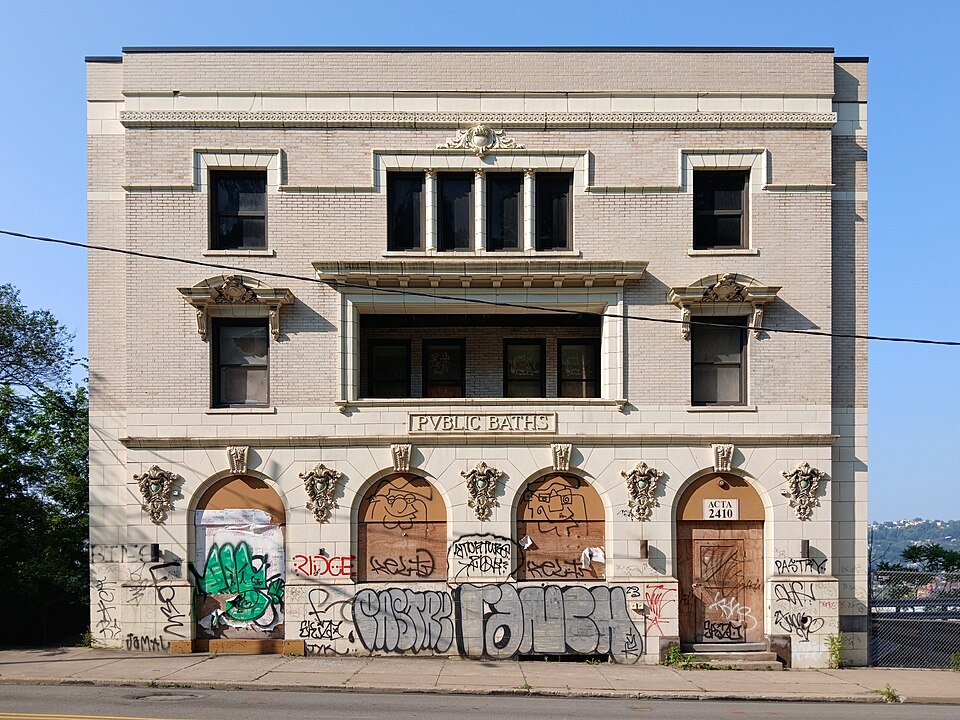
Built in 1907–1908, this splendid bathhouse was designed by Carpenter & Crocker,1 who did the whole ground-floor front in terra cotta.
This bathhouse served Soho, once a crowded neighborhood of tiny houses, many without indoor plumbing; long lines would form on Saturday nights as the working classes took their one chance to get clean. Almost all the houses are gone, and most of the other buildings, leaving overgrown foundations; this stretch of Fifth Avenue is spookily deserted. Even the neighborhood has ceased to exist in Pittsburghers’ imaginations. Soho once referred to the area around the north end of today’s Birmingham Bridge, but there is no such place now on city planning maps. What used to be Soho is divided officially between “Bluff,” “West Oakland,” and “South Oakland.” Soho is generally mentioned only when Andy Warhol comes up, because he was born there; but if you ask where Soho was, Wikipedia will tell you it is a synonym for Uptown, which it will also tell you is the same as the Bluff. (In fact the house where Andy Warhol was born, now a patch of woods on a deserted street, is in the part designated West Oakland by the city.)
This building was in use more recently than most, but it, too, has been left to rot. It is one of only three or four standing public baths in the city, only one of which—the Oliver Bathhouse—is still serving its original purpose.
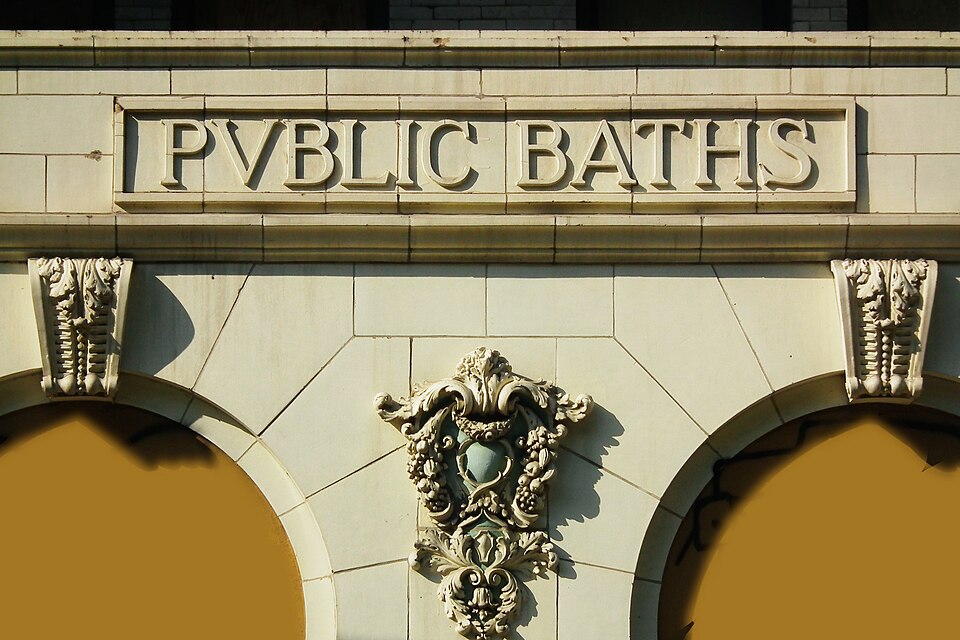
Old Pa Pitt painted out the close-up graffiti in this picture, because they were distracting, and because if street gangs want to advertise on his site, they can pay for it.
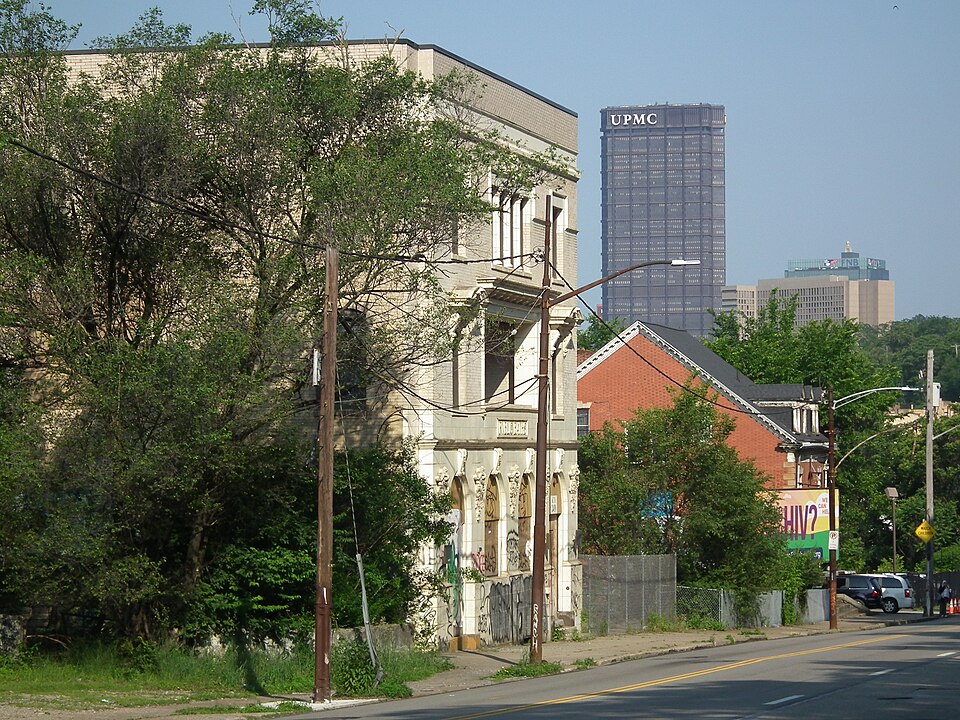
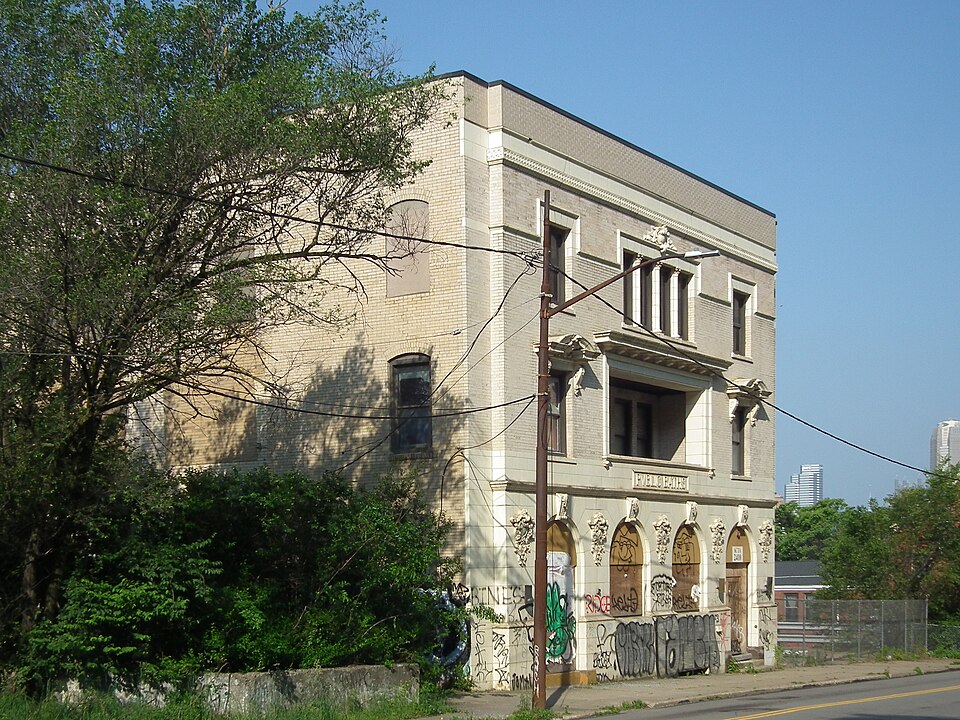
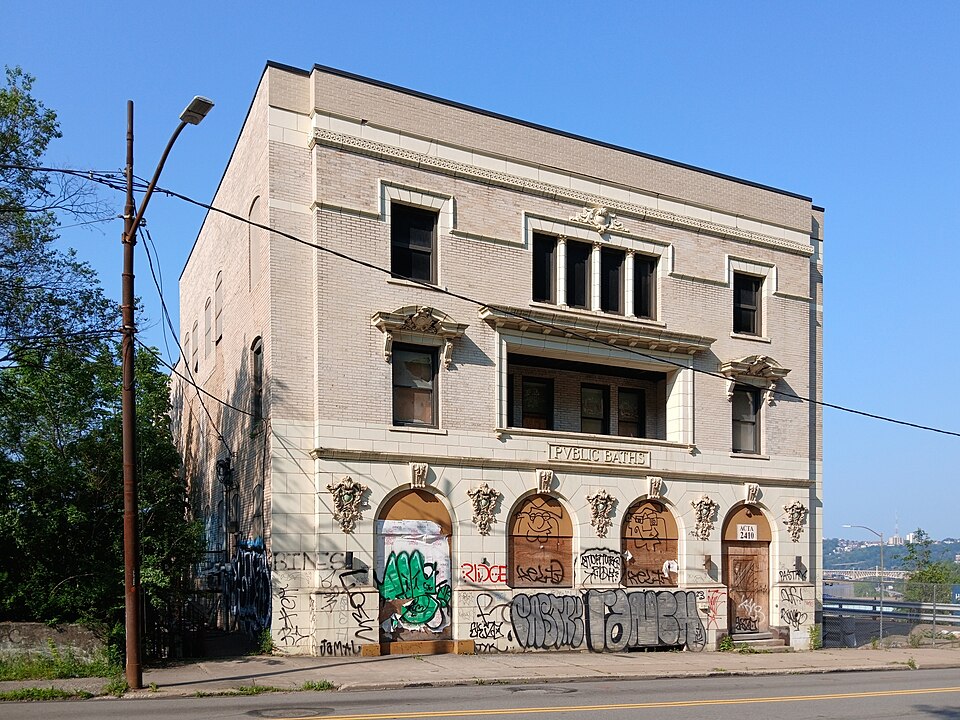
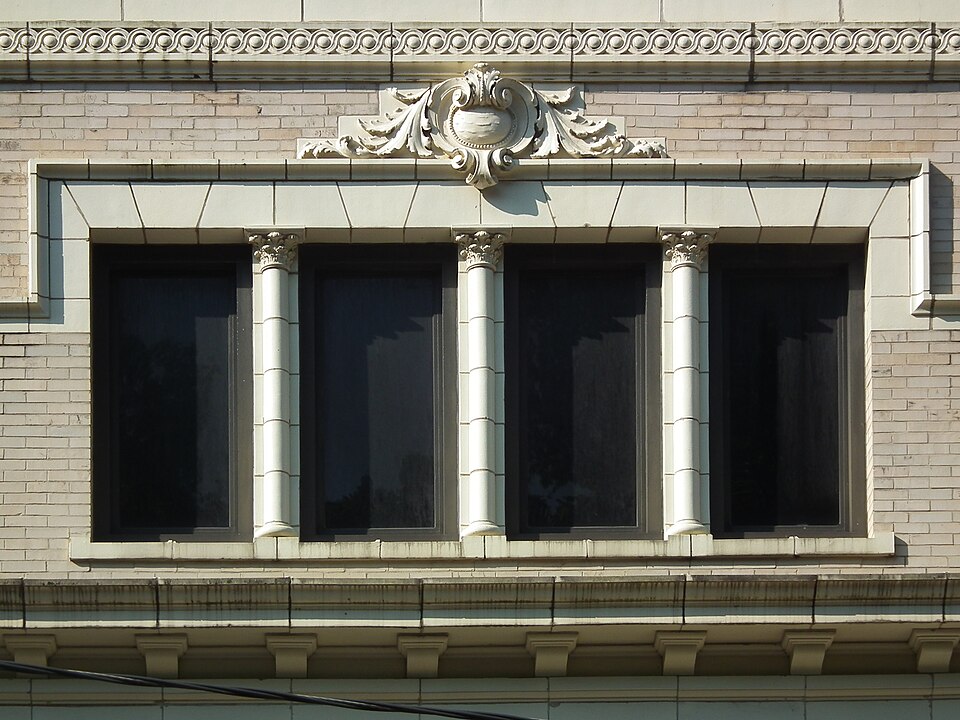
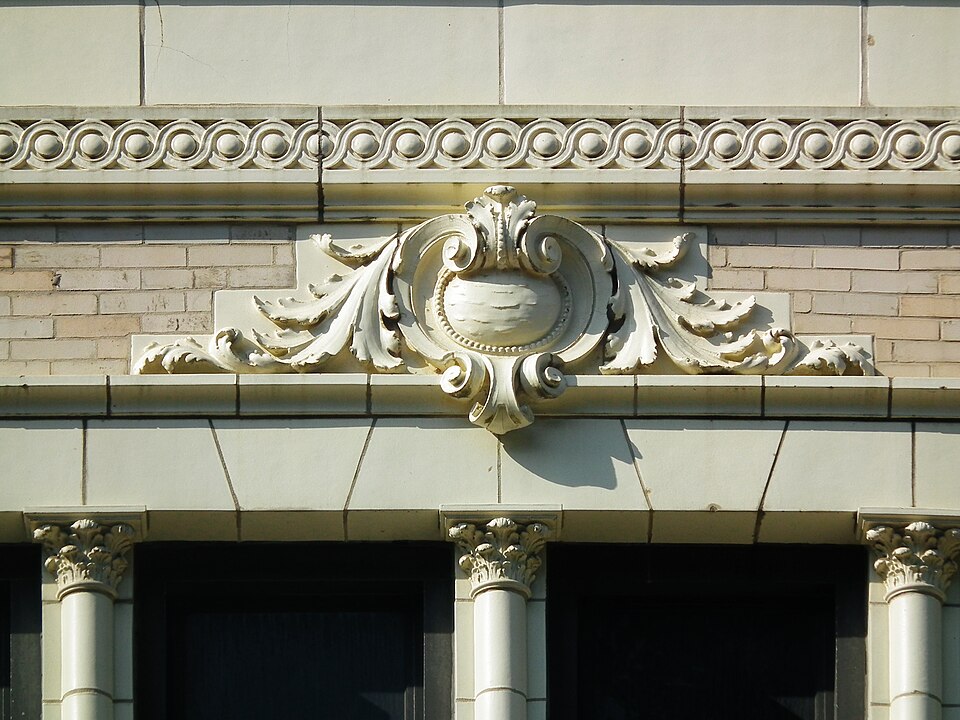
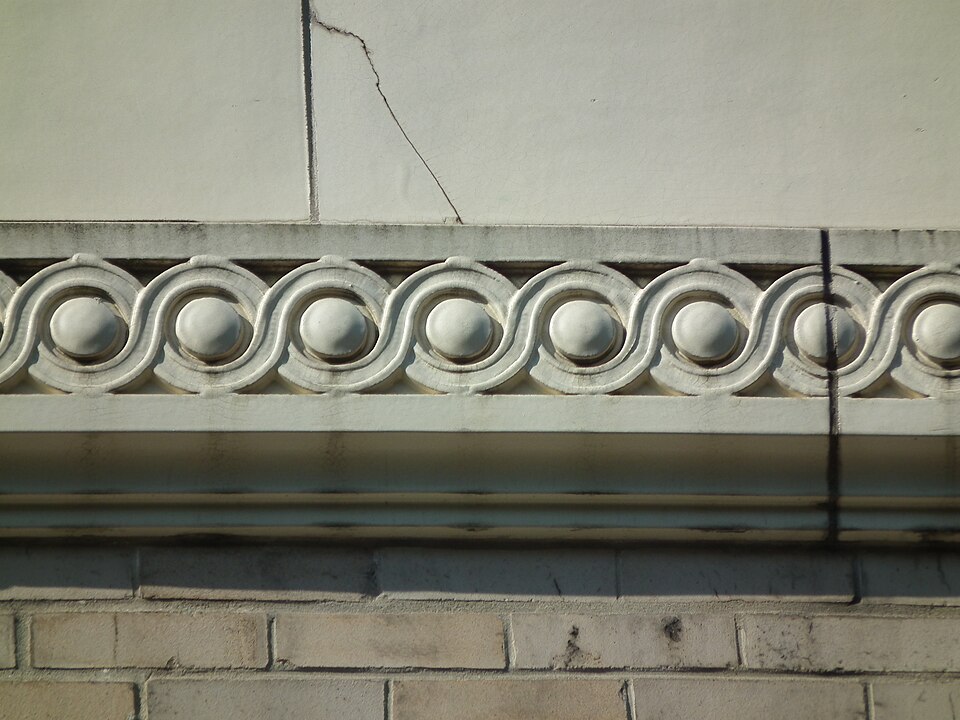

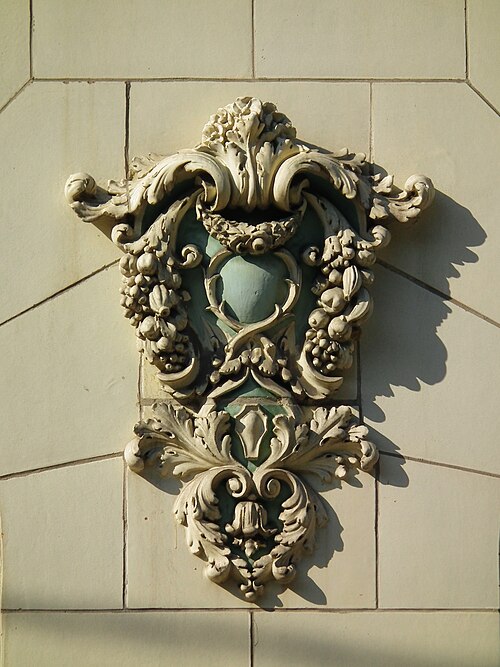
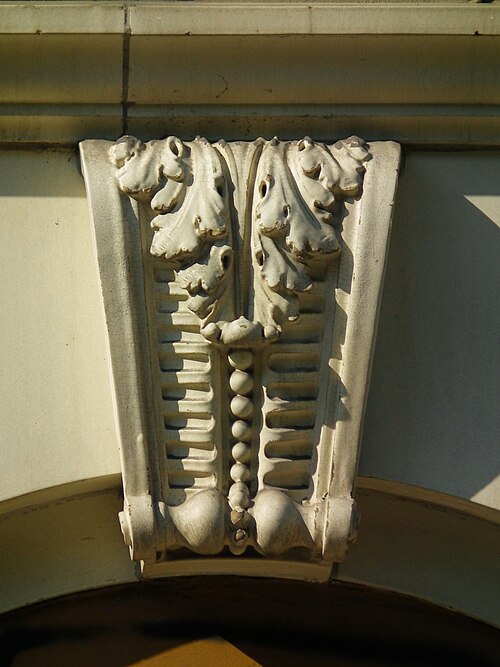
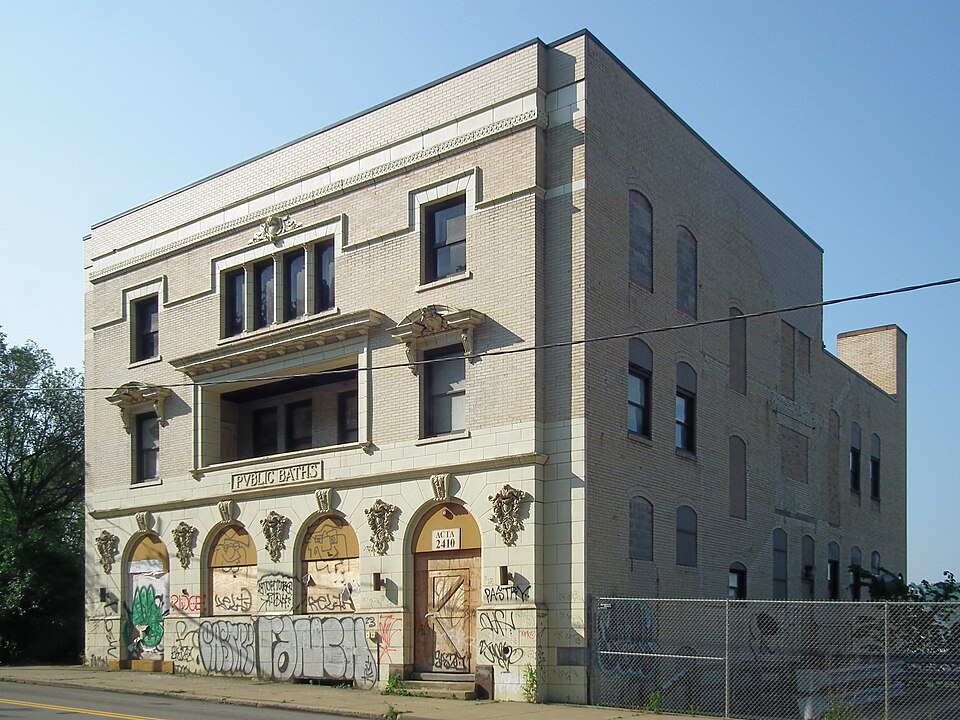
Comments

